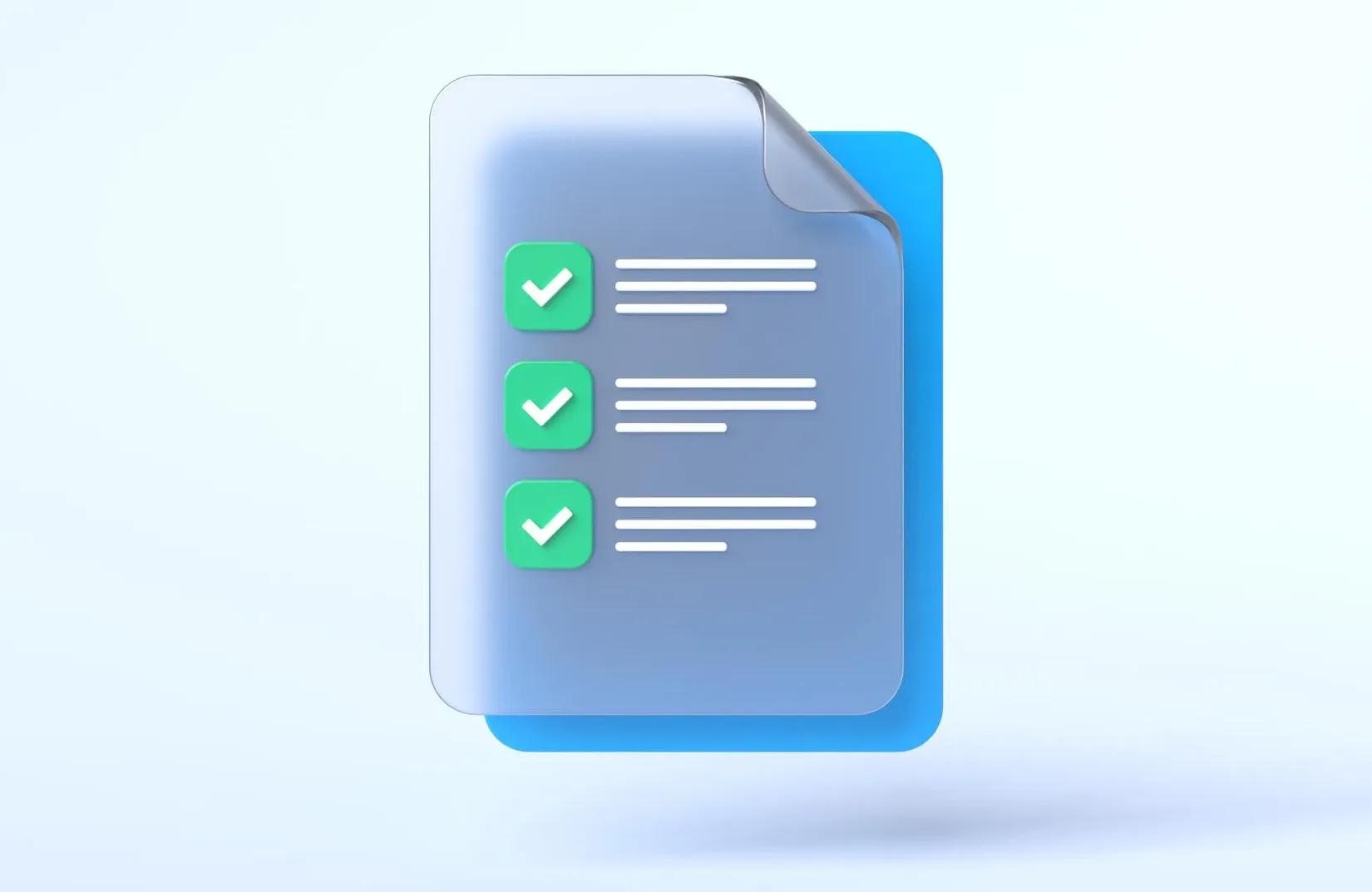Are you just a few years away from retirement? Perhaps feeling a mix of excitement and nervousness about what lies ahead. This transitional period is a pivotal time for ensuring that your golden years are financially secure and fulfilling. Planning during this crucial 5-year window can make all the difference.
In this guide, we’ll explore the six most important pre-retirement moves you need to make to prepare for a smooth and enjoyable transition into retirement.
Table of Contents
Get a Clear Financial Picture
Know Where You Stand
Understanding your current financial situation and projecting future needs is the first step in ensuring a successful retirement. Regularly updating and reviewing your retirement plan is crucial to staying on track.
Current & Projected Retirement Savings
Assess Current Savings: Evaluate the balances in your 401(k), IRAs, and any other retirement accounts.
- Tip: Keep an eye on the performance of your investments and rebalance your portfolio as needed to maintain your desired asset allocation.
Project Future Savings: Estimate how much your savings will grow by the time you retire. Consider factors such as your contribution rate, employer matches, and average annual returns.
- Tool: Use retirement savings calculators to project future values based on different scenarios.
Anticipated Expenses
Estimate Living Costs: Make a detailed estimate of your future living expenses. Include categories like housing, utilities, groceries, transportation, and leisure activities.
- Tip: Don’t forget to factor in inflation, which can significantly impact your expenses over time.
Healthcare Costs: Plan for healthcare expenses, including insurance premiums, out-of-pocket costs, and potential long-term care needs.
- Statistic: According to Fidelity, a 65-year-old couple retiring in 2023 may need approximately $315,000 to cover healthcare costs in retirement.
Travel and Leisure: Account for the cost of travel, hobbies, and other activities you plan to enjoy in retirement.
Potential Income Sources
Social Security: Calculate your expected Social Security benefits. The Social Security Administration’s website offers calculators to help estimate your benefits based on your earnings history and retirement age.
- Tip: Delaying benefits until age 70 can significantly increase your monthly payout.
Pensions: If you’re eligible for a pension, understand the terms and payment options. Consider whether a lump-sum payout or monthly annuity is better for your situation.
Part-Time Work: Consider the potential income from part-time or freelance work. This can provide additional financial security and help you stay active and engaged.
Utilize Retirement Calculators and Planning Tools
Retirement Calculators: Use online retirement calculators to get a clearer picture of your financial readiness. These tools can help you estimate how much you need to save, how long your savings will last, and how different variables (like retirement age and investment returns) impact your retirement outlook.
Financial Planning Software: Consider using comprehensive financial planning software or working with a financial advisor to create a detailed retirement plan. This plan should include various scenarios and strategies to help you achieve your retirement goals.
By understanding where you stand financially and projecting your future needs, you can make informed decisions to ensure a comfortable and secure retirement. Regularly revisiting and adjusting your retirement plan in response to life changes and market conditions will help you stay on track and achieve your long-term financial goals.

Optimize Your Savings Strategy
Maximize Your Nest Egg
As you approach retirement, it becomes increasingly important to optimize your savings strategy. Here are some steps to ensure you’re making the most of your savings opportunities:
Review Your Budget
Identify Unnecessary Expenses: Carefully review your current budget to identify areas where you can cut back. This might include dining out, subscription services, or discretionary spending.
- Tip: Use budgeting apps or spreadsheets to track your spending and highlight areas for potential savings.
Redirect Savings: Reallocate the money saved from cutting unnecessary expenses directly into your retirement accounts.
- Example: If you save $200 a month by reducing dining out, redirect that amount into your 401(k) or IRA.
Increase Contributions
Maximize Retirement Contributions: Ensure you are contributing the maximum allowable amount to your retirement accounts.
- 401(k) Contributions: For 2024, the maximum contribution limit for a 401(k) is $23,000. If you’re not hitting this limit, consider increasing your contributions.
- IRA Contributions: The contribution limit for IRAs in 2024 is $7,000. Aim to contribute the full amount if possible.
Automate Contributions: Set up automatic contributions to your retirement accounts to ensure consistency and take advantage of dollar-cost averaging.
- Tip: If you receive a raise or bonus, increase your retirement contributions proportionately.
Catch-Up Contributions
Leverage Catch-Up Contributions: If you are 50 or older, you can make additional catch-up contributions to your retirement accounts.
- 401(k) Catch-Up: You can contribute an extra $7,500 to your 401(k) in 2024, bringing the total potential contribution to $30,500.
- IRA Catch-Up: You can contribute an additional $1,000 to your IRA, bringing the total potential contribution to $8,000.
Maximize Tax Benefits: By making catch-up contributions, you not only boost your retirement savings but also reduce your taxable income, potentially lowering your tax bill.
- Example: If you’re in the 24% tax bracket, an additional $7,500 contribution to your 401(k) can save you $1,800 in taxes.
By reviewing your budget, increasing your retirement contributions, and taking advantage of catch-up contributions, you can significantly enhance your nest egg as you approach retirement. These steps will help ensure you have the financial resources needed to support a comfortable and secure retirement.
Plan for Social Security
Understanding Your Benefits
Social Security can play a crucial role in your retirement income, so it’s important to understand how to maximize your benefits. Here are key aspects to consider:
Eligibility Requirements
Work Credits: You need at least 40 work credits to qualify for Social Security benefits. Generally, you earn one credit for each $1,640 of earnings, up to a maximum of four credits per year.
- Tip: Review your Social Security statement annually to ensure your earnings have been accurately reported and that you are on track to earn enough credits.
Full Retirement Age (FRA)
Determine Your FRA: Your FRA depends on your birth year. For those born between 1943 and 1954, the FRA is 66. For those born in 1960 or later, the FRA is 67. If you were born between these years, the FRA increases gradually.
- Example: If you were born in 1958, your FRA is 66 years and 8 months.
Impact of Early or Late Claiming:
- Early Claiming: You can start receiving benefits as early as age 62, but your monthly benefit will be permanently reduced by up to 30% if you claim before your FRA.
- Delayed Claiming: For each year you delay claiming benefits past your FRA, your benefit increases by approximately 8%, up until age 70.
- Tip: Weigh the pros and cons of early versus delayed claiming based on your health, financial needs, and life expectancy.
Estimate Benefits
Create a Social Security Account: Visit the Social Security Administration’s website (https://www.ssa.gov/) and create a mySocialSecurity account. This will allow you to access your Social Security statement and get personalized benefit estimates based on your actual earnings record.
- Go to https://www.ssa.gov/.
- Click on “mySocialSecurity” and follow the prompts to create an account.
- Once your account is set up, you can view your earnings record, estimate your future benefits, and update your information.
Benefit Calculators: Use the benefit calculators available on the SSA website to explore different scenarios, such as the impact of working longer or retiring earlier.
- Example: If you plan to retire at 62 versus 70, you can see how your monthly benefit amount changes and make an informed decision.
Understanding your Social Security benefits and planning when to claim them is essential for optimizing your retirement income. By ensuring you meet eligibility requirements, knowing your FRA, and using the SSA’s tools to estimate your benefits, you can make strategic decisions that best suit your financial needs and retirement goals.

Consider Tax Implications
Minimize Your Tax Bill
Understanding the tax implications of your retirement income can significantly impact your overall financial health in retirement. Here are some key considerations and strategies to help you minimize your tax bill:
Retirement Income Taxes
Social Security Benefits: Depending on your total income, up to 85% of your Social Security benefits may be taxable.
- Tip: Use the IRS Social Security benefits worksheet to determine how much of your benefits may be taxable.
Traditional IRAs and 401(k)s: Withdrawals from traditional IRAs and 401(k) plans are generally taxed as ordinary income.
- Example: If you’re in the 22% tax bracket and withdraw $10,000 from your traditional IRA, you could owe $2,200 in taxes on that withdrawal.
Roth IRAs and Roth 401(k)s: Qualified withdrawals from Roth accounts are tax-free, provided you meet the 5-year holding period and age requirement (59½).
- Strategy: Roth accounts can provide tax-free income in retirement, which can be particularly advantageous if you expect to be in a higher tax bracket in the future.
Pensions and Annuities: Income from pensions and annuities may be fully or partially taxable, depending on the type of plan and whether you made pre-tax or after-tax contributions.
- Tip: Check your plan’s specifics to understand the tax treatment of your pension or annuity payments.
Tax-Saving Strategies
Roth Conversions: Consider converting traditional IRA or 401(k) funds to a Roth IRA. While you’ll pay taxes on the amount converted, future withdrawals will be tax-free.
- Strategy: Convert in years when your taxable income is lower to minimize the tax impact.
Tax-Loss Harvesting: Offset gains by selling investments that are currently at a loss. This can help reduce your taxable income and balance out capital gains.
- Example: If you have $5,000 in capital gains and sell investments at a $3,000 loss, you can offset your gains to $2,000, potentially lowering your tax liability.
Strategic Withdrawals: Plan your withdrawals to manage your tax bracket. For instance, draw from taxable accounts first and Roth accounts later to control your taxable income.
- Strategy: Withdraw just enough from traditional IRAs or 401(k)s to stay within a lower tax bracket, while using Roth accounts or savings to cover additional expenses.
Qualified Charitable Distributions (QCDs): If you’re 70½ or older, you can make tax-free charitable donations directly from your IRA, reducing your taxable income.
- Benefit: QCDs count toward your required minimum distribution (RMD) without being added to your taxable income.
Consulting a Tax Professional
Professional Advice: Navigating the complexities of tax planning in retirement can be challenging. Consulting a tax professional can help you develop a personalized tax strategy that aligns with your retirement goals and minimizes your tax burden.
- Action: Schedule regular consultations with a tax or financial advisor, especially when considering Roth conversions, large withdrawals, or other significant financial moves.
By understanding how different income sources are taxed and implementing effective tax-saving strategies, you can minimize your tax liability and preserve more of your retirement income. Taking proactive steps and seeking professional advice can help ensure a more financially secure retirement.

Prepare for Healthcare Costs
Staying Healthy in Retirement
Healthcare expenses can significantly impact your retirement finances. Planning for these costs is crucial to ensure you maintain your financial stability while accessing the necessary care.
Medicare Eligibility
Eligibility Age: Most individuals become eligible for Medicare at age 65.
- Tip: Apply for Medicare during your Initial Enrollment Period, which starts three months before you turn 65 and ends three months after your 65th birthday, to avoid late enrollment penalties.
Coverage Options:
- Medicare Part A: Covers hospital stays, skilled nursing facilities, and some home health care. Typically premium-free if you or your spouse paid Medicare taxes while working.
- Medicare Part B: Covers outpatient care, doctor visits, and preventive services. Requires a monthly premium.
- Medicare Part C (Medicare Advantage): An alternative to Original Medicare (Parts A and B), offered by private companies. Often includes additional benefits like vision, dental, and prescription drug coverage.
- Medicare Part D: Provides prescription drug coverage. Requires a separate premium unless included in a Medicare Advantage plan.
- Action: Visit the Medicare website or contact a Medicare advisor to understand your options and enroll in the appropriate plans.
Supplemental Insurance
Medigap Policies: These are private insurance plans that help cover costs not covered by Original Medicare, such as copayments, coinsurance, and deductibles.
- Benefits: Can provide financial protection against high out-of-pocket costs and offer additional benefits like foreign travel emergency coverage.
- Tip: Purchase a Medigap policy within six months of enrolling in Part B to avoid medical underwriting.
Medicare Advantage Plans: Some plans offer comprehensive coverage that includes prescription drugs, dental, vision, and hearing services, often with lower out-of-pocket costs.
- Consideration: Compare the costs and benefits of Medigap and Medicare Advantage plans to determine which best fits your needs.
Long-Term Care
Long-Term Care Insurance: Covers services not typically included in health insurance or Medicare, such as assistance with daily activities (bathing, dressing, eating).
- When to Buy: The ideal time to purchase long-term care insurance is in your mid-50s to early 60s when premiums are lower and you are more likely to qualify for coverage.
- Benefits: Provides financial protection against the high costs of long-term care, whether in a nursing home, assisted living facility, or at home.
- Tip: Look for policies with inflation protection to ensure your benefits keep pace with rising care costs.
Alternative Options:
- Savings and Investments: Set aside funds specifically for long-term care expenses.
- Life Insurance with Long-Term Care Riders: Some life insurance policies offer riders that allow you to use a portion of the death benefit for long-term care expenses.
- Home Equity: Consider using home equity through a reverse mortgage or selling your home to fund long-term care needs.
By understanding Medicare eligibility, exploring supplemental insurance options, and planning for long-term care, you can better manage healthcare costs in retirement. This preparation ensures you have access to the necessary medical services without compromising your financial security.
Additional Resources:
- Medicare.gov: Comprehensive information on Medicare plans, enrollment, and coverage options.
- AARP.org: Guides on Medigap policies, Medicare Advantage, and long-term care insurance.
- LongTermCare.gov: Resources on planning and paying for long-term care, including insurance options and financial planning tools.
Partner with a Fiduciary Financial Advisor
Get Expert Guidance
Navigating the complexities of retirement planning can be challenging. Partnering with a fiduciary financial advisor ensures you receive personalized and legally obligated advice tailored to your best interests.
Personalized Advice
Comprehensive Planning: A fiduciary advisor will take a holistic approach to your retirement planning, considering your entire financial picture, including savings, investments, taxes, and estate planning.
- Tip: Discuss your short-term and long-term goals with your advisor to develop a cohesive retirement strategy.
Optimized Strategies: Advisors can help optimize your retirement strategy by providing tailored advice on investment allocations, withdrawal strategies, and tax-efficient planning.
- Example: They might recommend specific asset allocations to balance growth and income based on your risk tolerance and time horizon.
Ongoing Support: Your advisor will monitor your progress and make adjustments as needed to ensure you stay on track with your retirement goals.
- Benefit: Regular reviews and updates help you adapt to changes in the market or your personal circumstances.
Finding a Fiduciary
Fiduciary Duty: Ensure the advisor you choose is legally obligated to act in your best interest. This fiduciary duty sets them apart from other financial professionals who may not be held to the same standard.
- Action: Ask potential advisors if they are fiduciaries and request written confirmation of their fiduciary status.
- Tip: Check the NAPFA website, they ONLY list fiduciary advisors on their “Find and Advisor” tool.
Credentials: Look for advisors with recognized credentials such as Certified Financial Planner (CFP) or Chartered Financial Analyst (CFA).
- Tip: Check the advisor’s background and credentials through resources like the Financial Industry Regulatory Authority (FINRA) BrokerCheck or the Certified Financial Planner Board.
Recommendations: Seek recommendations from trusted friends, family, or colleagues who have worked with fiduciary advisors.
- Step: Conduct interviews with multiple advisors to find one whose approach aligns with your values and goals.
Fee Structure: Understand how the advisor is compensated. Fiduciary advisors typically charge fees based on assets under management (AUM), hourly rates, or flat fees.
- Consideration: Be wary of advisors who earn commissions from selling financial products, as this may create conflicts of interest.
By working with a fiduciary financial advisor, you can benefit from expert guidance tailored to your unique financial situation. This partnership helps you make informed decisions, optimize your retirement plan, and achieve financial peace of mind.
Additional Resources:
- National Association of Personal Financial Advisors (NAPFA): Find fee-only fiduciary advisors near you.
- Financial Planning Association (FPA): Access resources and search for certified financial planners.
- CFP Board: Verify the credentials and fiduciary status of Certified Financial Planners.

In Conclusion
Taking these pre-retirement steps is crucial for ensuring a secure and enjoyable retirement. By thoroughly understanding your financial picture, optimizing your savings strategy, planning for Social Security, considering tax implications, preparing for healthcare costs, and partnering with a fiduciary financial advisor, you can set yourself up for success.
Start Planning Now
Early Preparation: The earlier you start, the more time you have to build a solid financial foundation and make informed decisions.
Ongoing Review: Regularly review and adjust your plan to stay on track with your goals and adapt to any changes in your financial situation or the economic landscape.
Embrace the New Chapter
Confidence and Excitement: Approach retirement with confidence and excitement, knowing you’ve taken the necessary steps to secure your financial future.
Peace of Mind: Enjoy peace of mind as you enter your golden years, reassured by the knowledge that you’ve laid a strong foundation for a comfortable retirement.
Now is the time to take action and make these crucial moves. Your future self will thank you for the preparation and peace of mind as you step into your retirement years. By being proactive and diligent, you can embrace this new phase of life with optimism and readiness.


